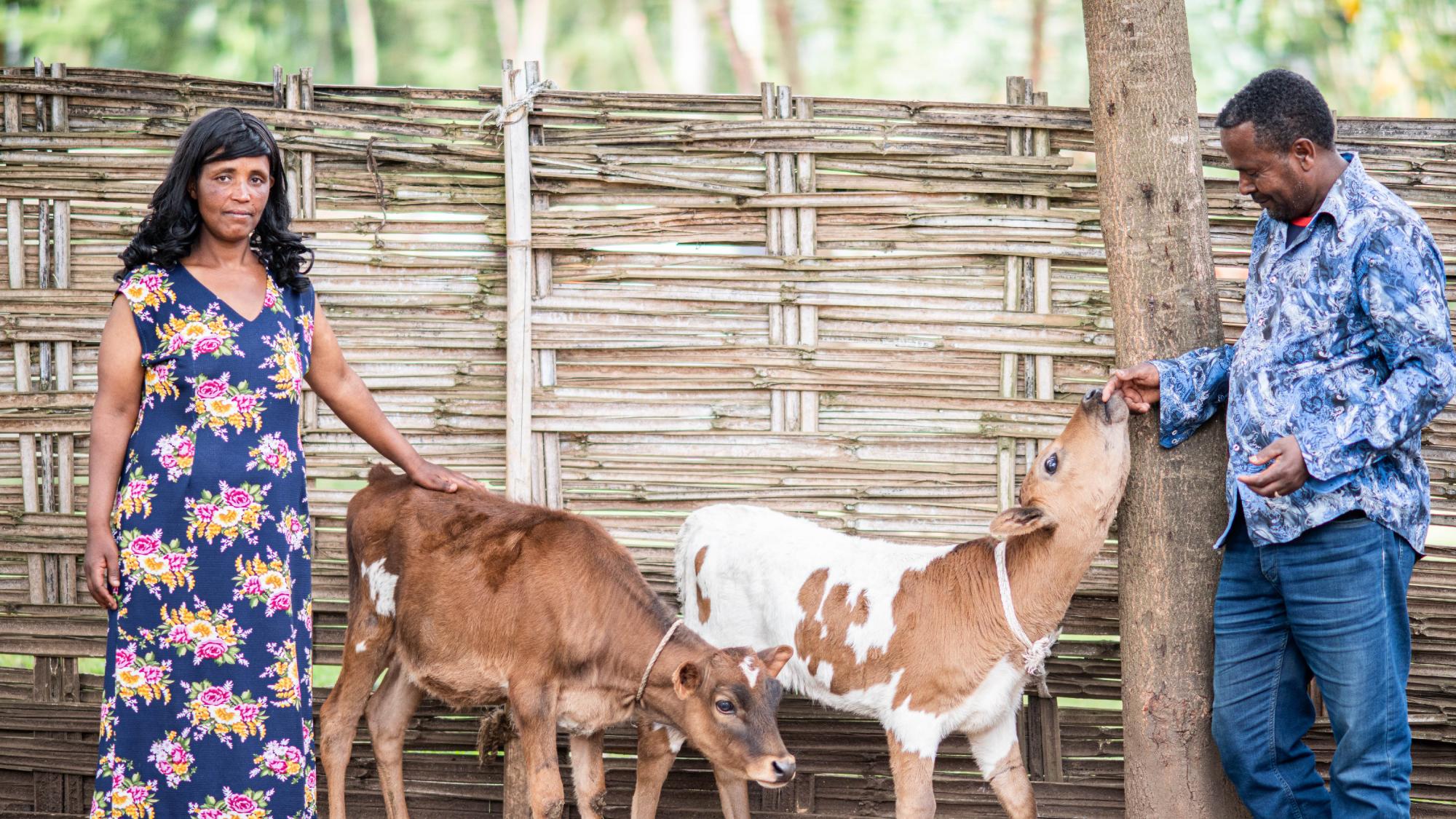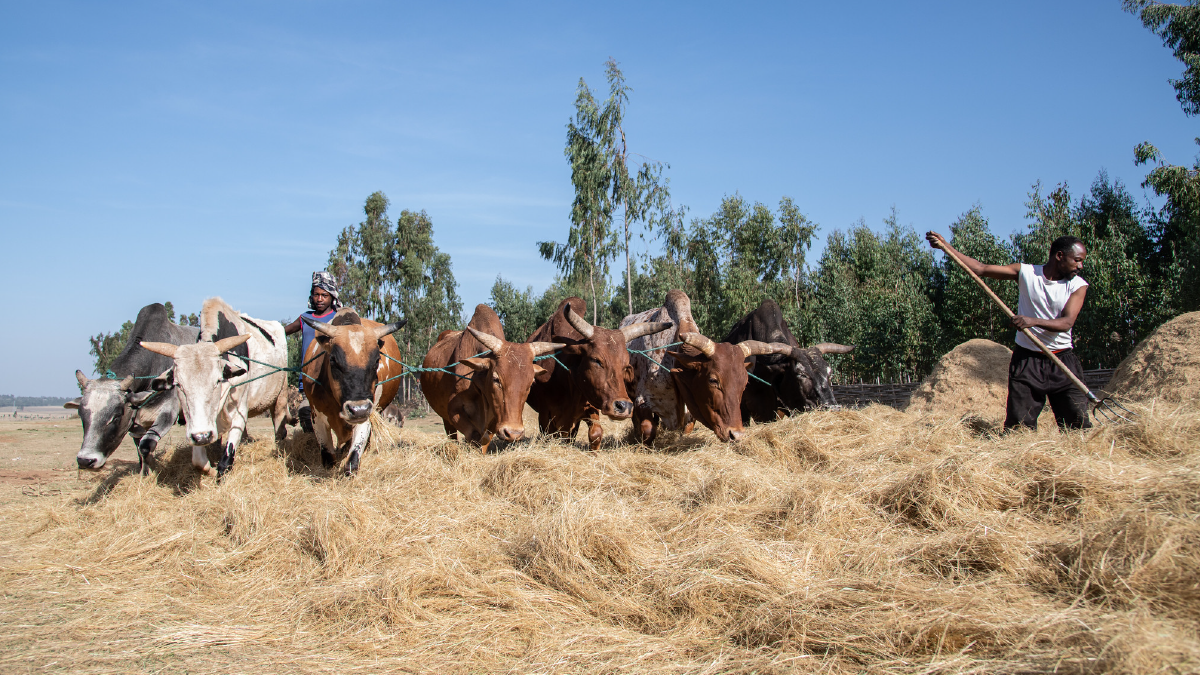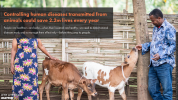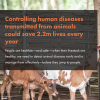
Controlling human diseases transmitted from animals could save 2.2m lives every year
People are healthier—and safer—when their livestock are healthy; we need to detect animal diseases early and to manage them effectively—before they jump to people.
Core message
Facts
- About 70% of the world’s 1.4 billion people living in extreme poverty depend on livestock for a living.
- Virtually all—more than 98%—of the global burden of human ‘zoonotic’ diseases, which originate in animals, was borne by people in poor countries (in pre-COVID-19 days).
- Nearly all of the human zoonotic health burden in poor countries is ‘endemic’—that is, caused by diseases that are continuously present in a given area. Such endemic zoonotic diseases include cysticercosis, which is caused by infection with the eggs of a pig tapeworm and can cause epileptic seizures in adults, and leptospirosis, a bacterial infection transmitted to humans via the urine of infected animals that, without treatment, can be fatal.
- Just one zoonotic disease—echinococcosis, caused by tapeworms commonly passing through dogs and sheep to humans—each year is estimated to cost more than 1 million human lives due to premature death and/or lost productivity.
The development cost
Zoonotic diseases, transmitted from animals to humans, retard development in poor countries. They not only cause vast human illness and untimely deaths but also keep families and whole communities in dire poverty.
The disease jump
It’s been estimated that just 13 of the more than 200 zoonotic diseases transmitted from wild and domesticated animals to people each year cause 2.4 billion human illness and 2.2 million human deaths, the vast majority of them in the word’s poorer countries. The coronavirus disease 2019 (COVID-19), which has now killed more than 1.5 million people in little more than a year, is just the latest (and certainly not the last) example of a disease jumping from animals to humans.
The endemic diseases
Most outbreaks of zoonotic diseases, unlike COVID-19, do not quickly spread to become epidemics (which affect one part of the world) or pandemics (affecting most of the world) but rather remain endemic in a given area. With sufficient resources, many endemic zoonoses can be well-managed or even eliminated entirely from a region. Brucellosis, for example, which is caused by a bacterial infection, is now a negligible hazard for people in rich countries. In poor countries, however, one in eight livestock are thought to suffer from the disease, which lowers their milk and meat yields and, when transmitted to people (typically by their consumption of unpasteurized dairy products contaminated with the bacteria), causes fever and joint pains and potentially life-threatening illnesses affecting the central nervous system.
Why women
Rural women are at especially high risk of contracting endemic zoonoses because they make up two out of three of the world’s poor livestock keepers.
Why livestock
Domesticated livestock remain lifelines for the world’s poorer communities. Farm animals provide agricultural households with food and nutrition, regular incomes and employment in dairy and other livestock enterprises, and animal muscle and manure to plough and fertilize croplands. Livestock also remain central to many of the most culturally important customs practiced in developing-countries.
Why wildlife
In many developing countries, wild as well as domesticated animals remain essential for healthy ecosystems as well as livelihoods through the ecosystem services—e.g., habitat protection, water and nutrient cycling, disease control—as well as wildlife revenues they provide.
The good news
The potential risks (big) and current burdens (heavy) generated by zoonotic diseases both can be greatly reduced.
Improving animal health improves human health. Implementing policies and actions to better control the ‘silent epidemic’ of neglected endemic zoonoses, such as brucellosis and cysticercosis, is a development imperative in low-income countries.
Human health challenges require animal as well as human health solutions
Medical treatments are often costly and hard to access in low- and middle-income countries. Preventing and stopping zoonoses in domestic and wild animal populations is a cost-effective way of preventing such diseases from spreading to human populations. Studies suggest that every one dollar invested in ‘One Health’ practices—which unite human, animal and environment health expertise—generates five dollars’ worth of benefits.
What you can do
Help reduce the heavy burden of common, and neglected, diseases transmitted by animals in developing countries
Many diseases transmitted from livestock to people go undiagnosed or misdiagnosed (fevers caused by zoonoses, for example, are frequently misattributed to malaria). Better ways are needed to diagnose, prevent and control these diseases in their animal hosts, by, for example, implementing smarter and wider animal surveillance programs, better livestock sanitation practices and timely livestock vaccination campaigns.
Help prevent new diseases transmitted by animals from spreading into epidemics or pandemics
Reducing the risk of such zoonoses as Middle East respiratory syndrome (MERS, originating in bats and camels), avian influenza (originating in poultry) and Ebola (believed to originate in bats) spreading requires implementing innovative disease surveillance programs that help experts to detect disease outbreaks rapidly and to pinpoint exactly where the diseases emerge. These control programs must involve scientists and control agents working closely not only with each other but also with local community members, who are in the best position to provide reliable information and timelines about disease outbreaks and whose participation in such control work is absolutely essential to its success.


